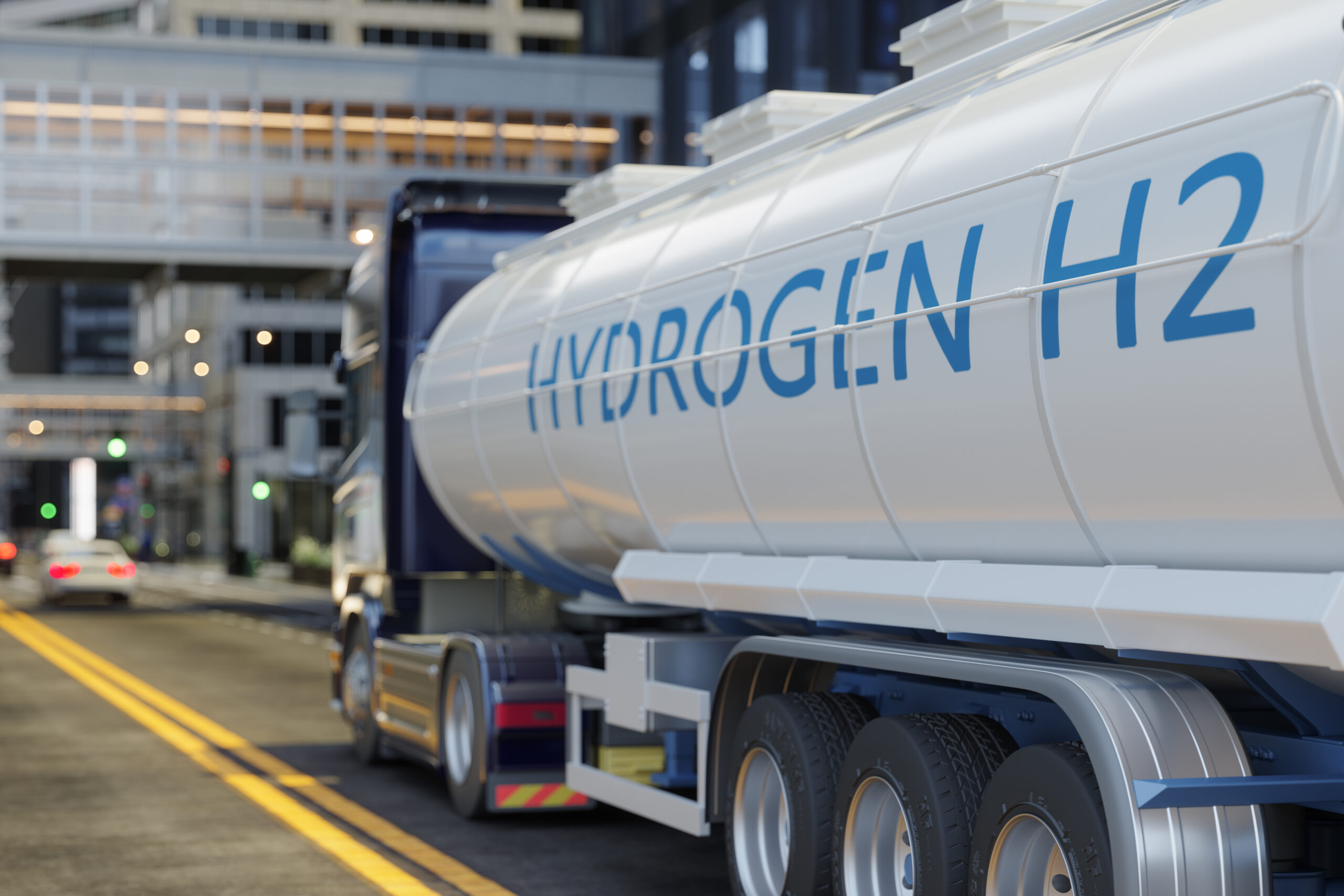Less than a year after announcing plans to establish a hydrogen-based aviation fuel hub at Pittsburgh International Airport, Pennsylvania-based natural gas producer CNX has quietly taken down the website on which it advertised the hub.
The move comes as the fate of the much-vaunted hydrogen industry — seen by the Biden administration as a way to power America while reducing climate-altering emissions — is in upheaval.
While a Biden-era rule dealt a blow to those in the gas and oil industry hoping to invest in hydrogen technology and offered greater financial incentives to the renewable energy sector, President Donald Trump is showing preference for fossil fuel-powered hydrogen. Meanwhile, the fate of those Biden-era tax credits — whether for renewable energy or fossil fuel — is up in the air as congress wades through the budget reconciliation process.
Under Trump’s guidance, the Department of Energy has indicated it plans to kill Biden-era funding for four renewable-powered hydrogen hubs in primarily Democratic regions while retaining funds for fossil fuel-powered hubs in mostly red states, such as South Dakota, Ohio and Kentucky.
California, along with Oregon, Washington and other regions, are on the Department of Energy’s “cut” list, according to Politico, which said it obtained a spreadsheet of the projects.
If the recommendations are ultimately adopted by the Trump administration, Pennsylvania would very much become a state divided. While a proposed hub in the Appalachian region that would run on fossil fuels is marked for approval, a hub mostly reliant on renewable energy near Philadelphia is marked for denial.
The seven Regional Clean Hydrogen Hubs were a main plank of former President Joe Biden’s climate agenda, a $7 billion effort to establish a national network of hydrogen producers to slow the use of the fossil fuels largely blamed for global warming.
But with four of the hubs eliminated, the envisioned national hydrogen grid would become a patchwork, seemingly drawn along political lines and primarily powered by polluting sources of energy.
“The hydrogen hubs program was intended to spur innovations and demonstrations on how best to advance hydrogen as a tool in the clean energy economy,” said Julie McNamara, associate policy director for the Climate & Energy program at the nonprofit Union of Concerned Scientists.
“Blatantly co-opting these funds for use as handouts to political supporters and favored polluters would be shameful, and fully undermine the program’s ability to achieve those aims.”
While the Pennsylvania hub fueled by natural gas would use methane to provide energy for the production of so-called blue hydrogen, the other hub would use renewable energy such as wind and solar to produce what’s known as green hydrogen. By itself, the burning of hydrogen does not produce carbon dioxide emissions.
CNX was originally involved in the former hub, known as ARCH2, but told the Pittsburgh Business Times in March that it had paused involvement in the project because of the uncertainty surrounding federal funding. CNX’s name was also deleted from the ARCH2 website.
CNX did not respond to requests for comment on the status of the hydrogen hub and the sustainable aviation fuel site in Pittsburgh. A spokesperson for the airport said it “is continuing to move forward with its plans to become one of the first airports to have sustainable fuel production on-site.”
CNX was initially one of 15 companies enlisted in the hub, with plans to contribute “low carbon” natural gas to power hydrogen production, which entails using steam to draw off the hydrogen atoms from methane molecules, an expensive and energy intensive process.
But the company’s evolving relationship with the hydrogen industry appears to have soured when the Biden administration finalized a long-awaited federal rule on a tax credit for hydrogen production called 45V.
That final rule, CNX argued, was “overly restrictive,” and failed “to create sufficient economic incentives” for the company to expand its production of methane released from abandoned coal mines, which it said was key to the growing hydrogen economy. CNX pitched its involvement in the Sustainable Aviation Fuel project in Pittsburgh as being dependent upon the outcome of the 45V rule.
“We saw the fossil fuel industry view 45V as a lucrative chance for profit,” McNamara said. “Not by truly reducing emissions, but by introducing loopholes that made it easier to qualify.”
CNX had previously lobbied for the intricacies of 45V to work out in its favor. A little more than a year ago, a CNX lobbyist pushed Pennsylvania Gov. Josh Shapiro’s office to lobby the federal government to ensure the Treasury Department’s hydrogen rule was lucrative for coal mine methane — a request to which the Shapiro administration agreed, Capital & Main reported at the time.
The value the rule gave to coal mine-derived natural gas came down to a series of arcane specifics in a formula that measures life-cycle emissions from beginning to end of the creation of a single kilogram of hydrogen.
CNX urged the Treasury Department to treat coal mine methane as carbon-negative with the assumption that it would otherwise leak into the atmosphere from inactive coal mines, releasing a more potent greenhouse gas than if it were captured and burned, which would release carbon dioxide. (Both are greenhouse gases, but methane is well understood to be around 80 times more potent in the atmosphere than carbon dioxide over a 20-year timeframe.) By ascribing to this captured methane a negative value, a tiny portion of it could be blended into a natural gas hydrogen feedstock and qualify for the highest tier of the 45V tax incentive, the same level as hydrogen produced with renewable energy.
But the final rule went against the pleas of CNX and companies like it, including the ARCH2 hub itself, which urged the Treasury Department to pass a methane-friendly rule in 2024, arguing it could “lead to a loss of $6 billion in private investments” otherwise and have “far-reaching consequences” for the hydrogen industry.
“It’s like the Treasury Department went out of its way to say, ‘We hear what you’re saying. And the answer is no,’” said Sean O’Leary, senior researcher at the nonprofit think tank Ohio River Valley Institute.
The ruling was seen as a win for environmentalists, who urged the Treasury Department to ensure that any projects receiving subsidies under the guise of being “clean” were in fact clean. They feared CNX’s proposal, and that of other fossil fuel producers, would’ve given natural-gas based hydrogen a tax boost equal to that for renewable, emissions-free sources of hydrogen.
How and whether the rule will be upheld by the Trump administration — which has shown strong support for fossil fuels and a general disdain for renewable energy — remains an open question, and one of concern to environmentalists. According to Bloomberg, the American Petroleum Institute, a national oil and gas trade group, has lobbied the White House to ensure fossil fuels can qualify for the highest tier of the hydrogen tax credit.
O’Leary sees CNX’s apparent exit from ARCH2 as a sign of the hub’s strained economics. In October, O’Leary authored a paper in which he noted that the hub had lost four of its development partners, while a handful of others were showing signs of financial stress. “This is not a resume that inspires confidence among prospective investors,” O’Leary wrote. CNX’s reluctance to move forward signals a broader trend within the industry, O’Leary said in an interview with Capital & Main.
“The wheels are coming off,” O’Leary said. “Even after subsidies are taken into account, the economics still aren’t there to make many of these projects work.”
Another project development partner for ARCH2, KeyState Energy, is also showing signs of uncertainty. In February, a primary customer for its blue hydrogen, Nikola Corporation, a transportation company that had planned to use the hydrogen for a zero-emission truck fleet, filed for Chapter 11 bankruptcy. The company plans to sell its assets.
KeyState CEO Perry Babb told Capital & Main the company had pivoted from its energy production project with Nikola to a new ammonia fertilizer project that has a committed customer, and will still rely on hydrogen and receive funds from ARCH2. The first payment from the hubs program has been doled out and KeyState will invoice for reimbursement soon, he said.
Babb said he still meets regularly with the remaining ARCH2 project partners, who are “all positive in expressing a way forward.” But he noted that, for years, he’s weathered regulatory uncertainty; the final 45V rule was the nail in the coffin for Keystate’s original plans to produce blue hydrogen under ARCH2. He said the company has also put its participation in the Pittsburgh Sustainable Aviation Fuel hub “on pause.”
“Last May, I began to notice dozens of hydrogen projects being canceled,” he said. “I had thought that it was essentially because the business case wasn’t sound.
“With the continued uncertainty around tax credits through the end of the Biden administration… we said, ‘That’s it. We’re done. We’re going to go where there’s a market that’s predictable.’”
While failing to find a partner in the Biden-era Treasury Department, CNX could soon turn to the state, where Gov. Shapiro is reupping a $49 million tax credit for hydrogen production as part of his “Lightning Plan,” a six-pronged portfolio of legislation designed to speed up the commonwealth’s clean energy economy.
Though supported by some state environmental groups, the plan caught the ire of others, like Karen Feridun, co-founder of the grassroots Better Path Coalition, who said in a statement that the Lightning Plan would “continue and even expand fossil fuel production.” On March 11, a group of Democratic senators and representatives introduced 12 cosponsorship memos, six in each chamber, carrying out Shapiro’s plan.
“He’s going to do whatever he needs to do to try to keep [hydrogen] going,” Feridun said of Shapiro in an interview with Capital & Main. “It’s a nice way to kind of provide cover for having a continued fossil fuel plan,” one that “sounds really good to voters.”
Should ARCH2 unravel, Feridun fears grassroots environmentalists would be tasked with tracking individual projects, without the cohesion of a hub offering guidance. Even so, she said there never was “a clear map that defined what the footprint of all of this was,” which left frontline communities in the dark.
Like O’Leary, Danny Cullenward, senior fellow at the Kleinman Center for Energy Policy at the University of Pennsylvania, said he now sees the hydrogen “hype” bubble beginning to burst. Though he believes hydrogen has an important, if niche, place in the clean energy transition, its economics don’t make sense in all uses unless heavily subsidized.
“We basically set up a structure that said, at the end of this rainbow is a giant pot of gold. And everybody said, ‘We’d all like to do that. That all sounds great to us,’” he said. “I think now the cold, hard reality of, ‘Does hydrogen make sense? And in what applications would it make sense?’ is becoming a little bit more real.”
The whiplash of all this impacts Pennsylvania communities, many that are former oil, gas and coal towns learning that major projects they’d once planned for are no longer.
“It’s immensely damaging,” O’Leary said. “State or even county and municipal level governments, they’re making economic development choices based on these expectations.”
“The distraction impact of what’s going on is just staggering.”
Copyright 2025 Capital & Main


 Latest NewsDecember 8, 2025
Latest NewsDecember 8, 2025
 Striking BackDecember 4, 2025
Striking BackDecember 4, 2025
 The SlickDecember 2, 2025
The SlickDecember 2, 2025
 Latest NewsDecember 1, 2025
Latest NewsDecember 1, 2025
 Dirty MoneyDecember 3, 2025
Dirty MoneyDecember 3, 2025
 Child FarmworkersDecember 5, 2025
Child FarmworkersDecember 5, 2025
 Column - State of InequalityDecember 4, 2025
Column - State of InequalityDecember 4, 2025
 Latest NewsDecember 10, 2025
Latest NewsDecember 10, 2025

